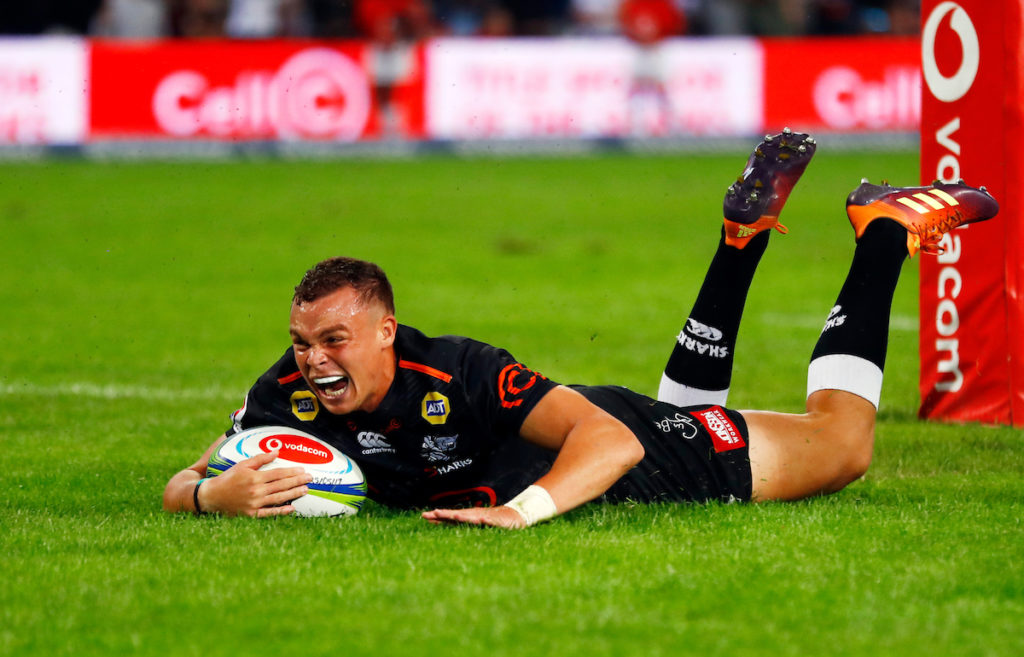Curwin Bosch would have been much better off sharpening his game in the Springboks’ camp than preparing for a watered-down Currie Cup with the Sharks, writes JOHN GOLIATH.
Richie Mo’unga and Beauden Barrett turned on the style during the Crusaders and Hurricanes’ Vodacom Super Rugby semi-final. The All Blacks flyhalves played a big role in the awesome spectacle, which left many of us breathless by the time Sam Whitelock’s cynical slap-down was missed at the end of the match.
Barrett and Mo’unga are just in another stratosphere in terms of flyhalf play at the moment, and produced two quality all-round displays, which should have New Zealand’s opposition quaking in their boots ahead of the World Cup in Japan.
Both players are superb with ball in hand, as they are fast, elusive and strong on their feet. They also have great distribution skills, while their reading of the play and option-taking is clairvoyant-like. Their sensational attacking kicks also give their respective teams a lot more options to hurt the opposition.
Both players aren’t the greatest goal-kickers in the world, with Mo’unga hovering around the low 70% success rate. However, this is probably the most-improved part of Barrett’s game, as he has upped his strike rate towards 80% this season.
But these two players’ success is a credit to New Zealand’s succession plan. Life after the mercurial Dan Carter has been a breeze since he decided to retire from the game after a wonderful swansong in the black jersey at the 2015 World Cup.
The transition has been seamless, as Barrett has taken ownership of a position that was occupied by one of the best players to ever play the game. And these days Mo’unga has emerged as a performer who could also easily slot in there without weakening the team.
Barrett made his debut for the All Blacks as a 20-year-old, a year after representing the New Zealand U20s. Eight years later and he has played 74 Test matches, probably winning about 90% of them as well.
Barrett and Springbok flyhalf Elton Jantjies made their Test debuts in the same year (2012). But since then Barrett has featured in 52 more Tests, because he was gradually exposed to Test rugby while being an understudy to Carter.
After Jantjies’ debut in 2012, he only really started featuring prominently for the Boks in 2016. But since then he hasn’t quite replicated his Super Rugby form at Test level, probably because he didn’t have the sort of path and support that Barrett enjoyed.
SA Rugby needs to ensure that Bosch doesn’t follow a similar path, which is why I find it completely ridiculous that he has been left out of the Springboks’ training squad following a superb Super Rugby campaign with the Sharks.
The kid oozes class and such a talent doesn’t come around too often. He is a Barrett-type player, and a versatile one who can play both fullback and flyhalf. He can run, step and kick with much of the same potency as his New Zealand counterparts.
Even if he is not currently in the Springbok plans, coach Rassie Erasmus should have invited him to the camp to work on some of his shortcomings, although it’s only his tackling that probably needs a bit of sharpening.
But he really should be there on merit anyway. He should have actually featured in the Rugby Championships to make a World Cup claim.
Now he has to prepare for the Currie Cup, which is probably going to be as insignificant this year as the Proteas’ final match at the Cricket World Cup.
It’s just not cricket …
Photo: Steve Haag via Hollywoodbets






